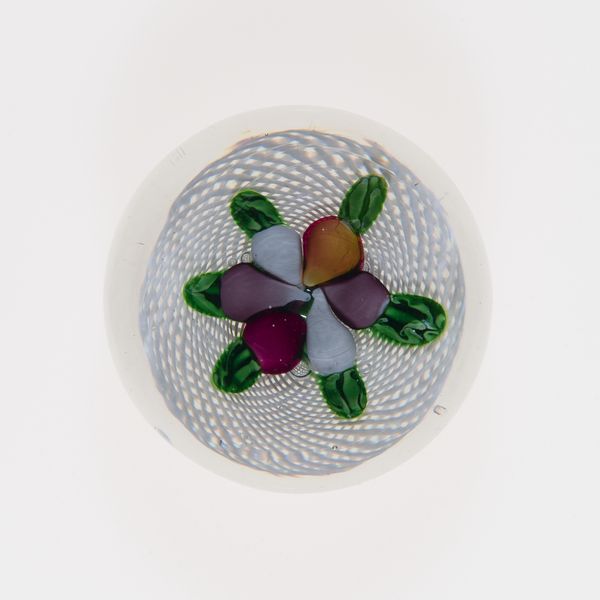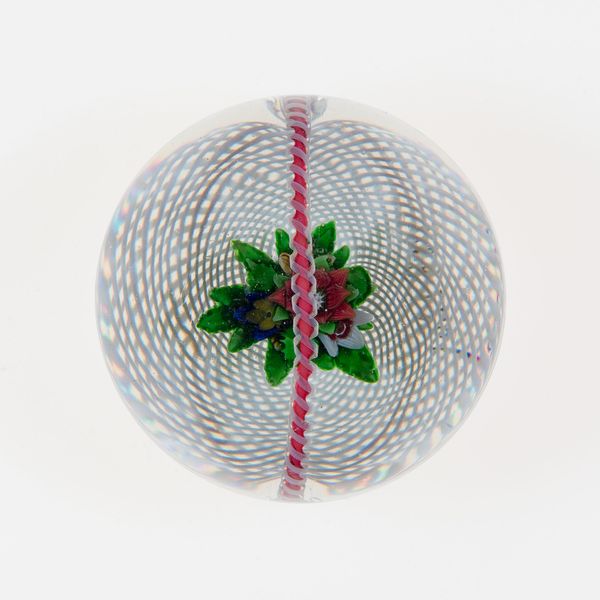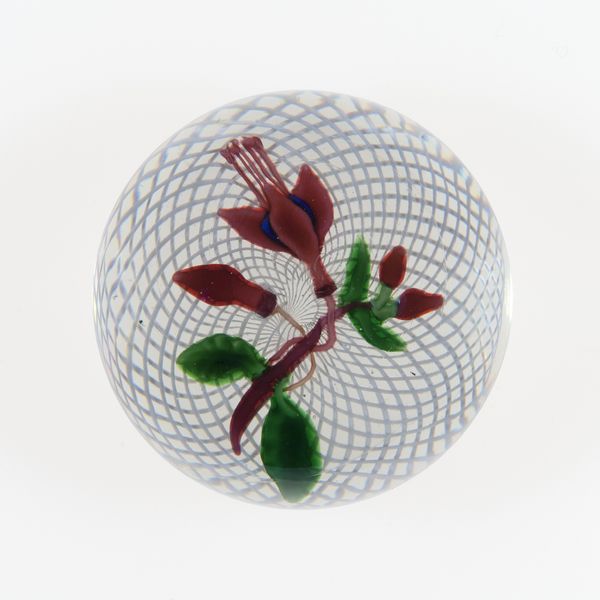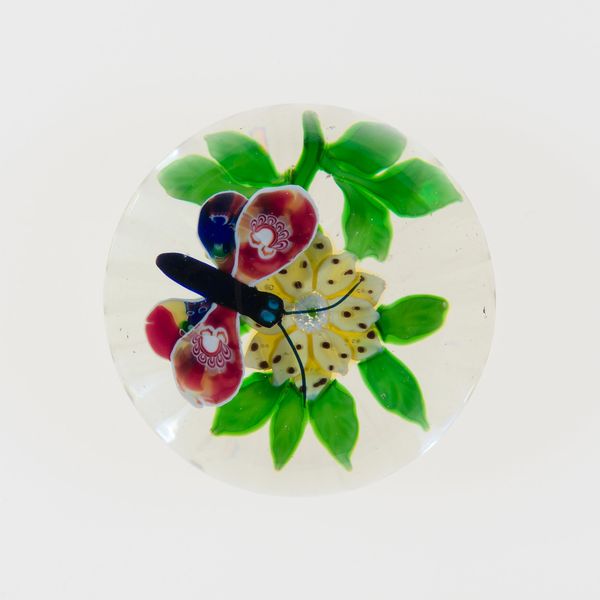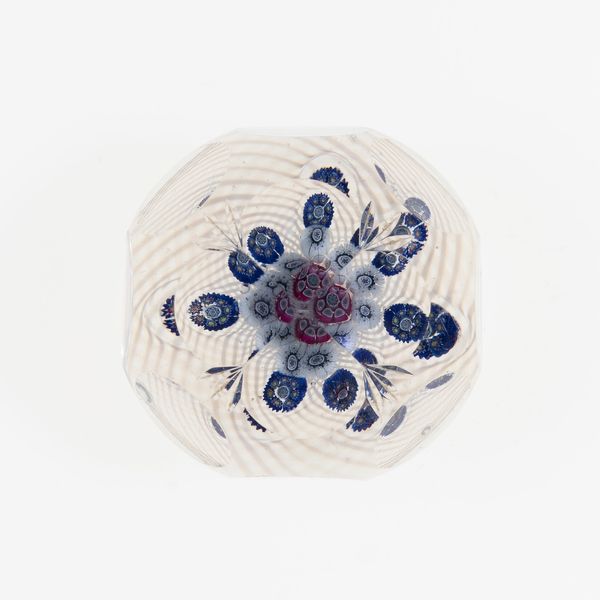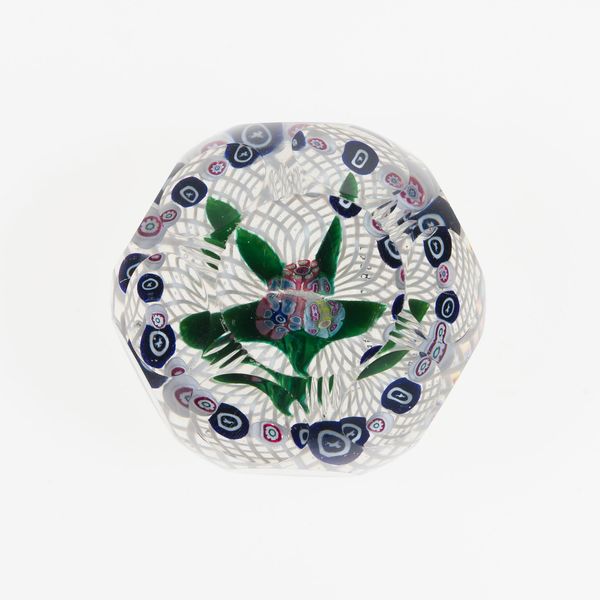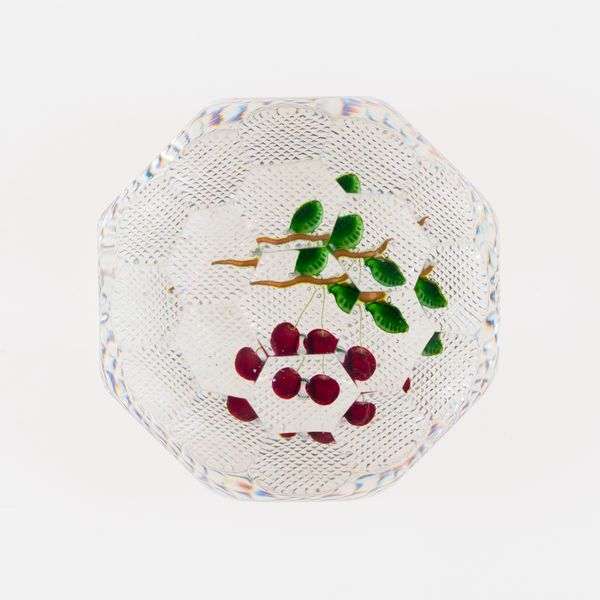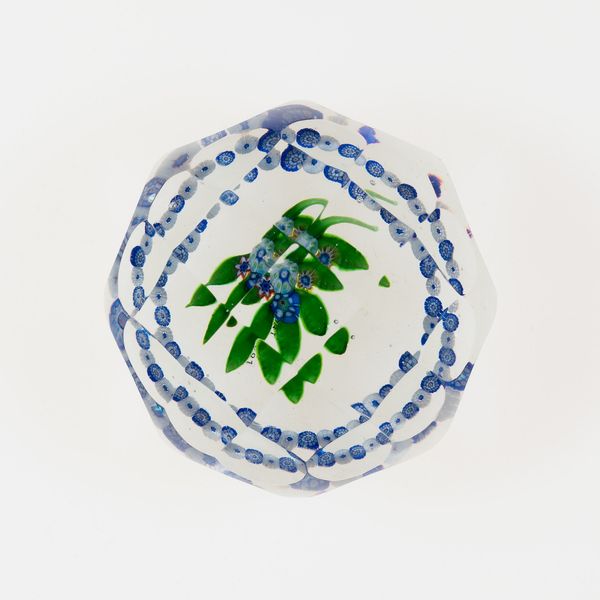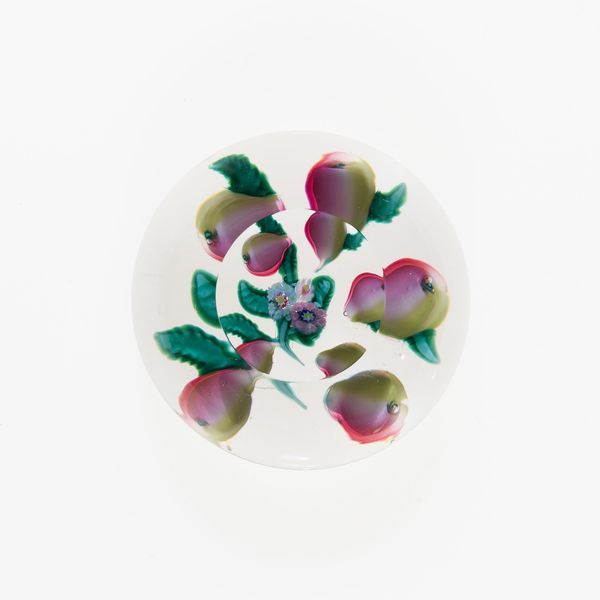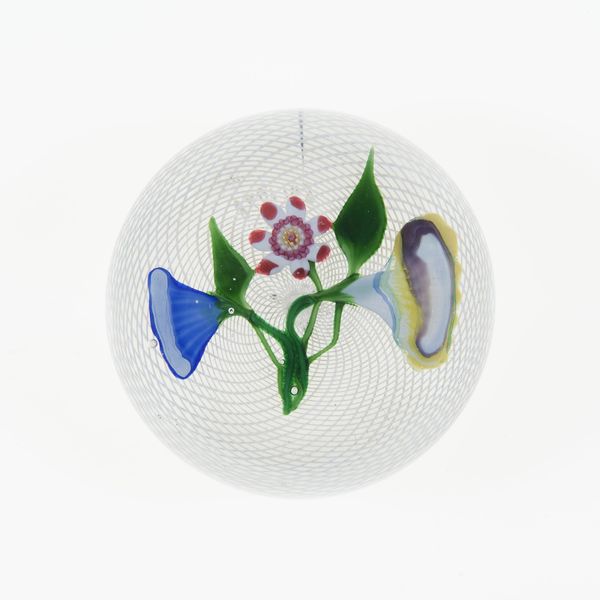
paper, glass
#
paper
#
glass
#
ceramic
#
decorative-art
Dimensions: Diam. 8.1 cm (3 3/16 in.)
Copyright: Public Domain
Editor: Here we have an intriguing little "Paperweight" from around the 19th century, made of glass, and it’s currently held at the Art Institute of Chicago. There's something almost unsettling about this still life captured in glass, it looks so fragile, like you could shatter it. How would you interpret this work? Curator: I see it as a reflection of the evolving socio-economic landscape of the 19th century. Paperweights, especially those crafted with such detail, became increasingly popular as symbols of status and taste within the burgeoning middle class. Think about how the Industrial Revolution fostered both mass production and artisanal craftsmanship. This piece encapsulates both – it’s an object for the desk, yet also an item of display and luxury. Why do you think fruit and foliage were chosen for its central motif? Editor: Perhaps to signal prosperity and natural bounty, common themes in art meant to express comfort and wealth? I see the grapes now... are they intended to symbolize something more specific, perhaps referencing classical motifs? Curator: Indeed, grapes have long carried connotations beyond mere prosperity. Consider their use in art history, frequently linked to Dionysus or Bacchus and ideas of fertility, festivity, and even sacrifice. Placing these symbolic clusters within the controlled, manufactured environment of a glass paperweight subtly manipulates this iconography. The natural is being harnessed, stylized and constrained for domestic consumption, revealing attitudes towards the role and presentation of nature itself. Is this something that resonates with you when observing this paperweight? Editor: I never considered that juxtaposition of natural symbolism with manufactured art. It’s almost like a tiny encapsulated world, reflecting broader cultural themes. That has given me a whole new appreciation for something that I otherwise dismissed as being of modest value. Curator: Exactly! Its value lies in how it can be read through a larger cultural and historical lens. Appreciating how seemingly mundane objects embody rich, complex narratives about our history is, I think, a skill every art lover should cultivate.
Comments
No comments
Be the first to comment and join the conversation on the ultimate creative platform.
